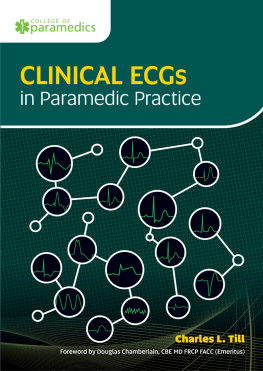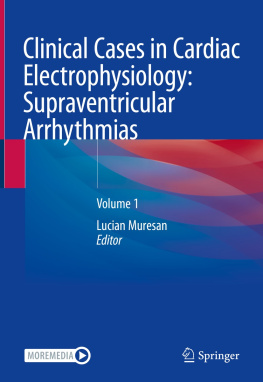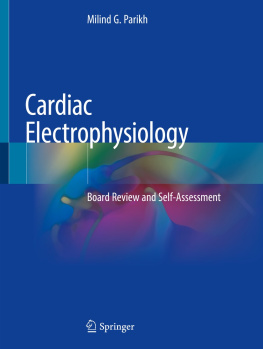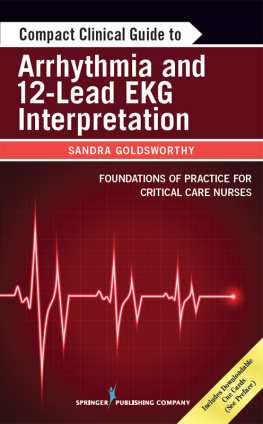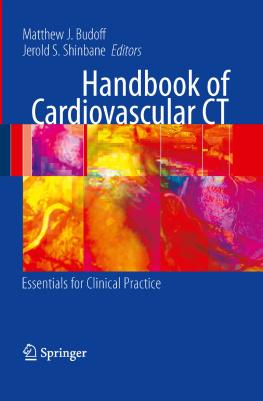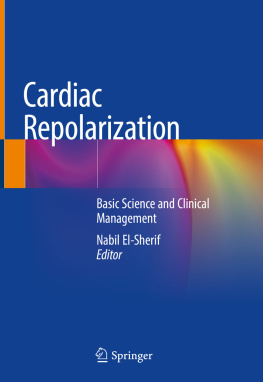Landmarks

Clinical ECGs in Paramedic Practice
Charles L. Till
Disclaimer
Class Professional Publishing have made every effort to ensure that the information, tables, drawings and diagrams contained in this book are accurate at the time of publication. The book cannot always contain all the information necessary for determining appropriate care and cannot address all individual situations; therefore, individuals using the book must ensure they have the appropriate knowledge and skills to enable suitable interpretation. Class Professional Publishing does not guarantee, and accepts no legal liability of whatever nature arising from or connected to, the accuracy, reliability, currency or completeness of the content of Clinical ECGs in Paramedic Practice. Users must always be aware that such innovations or alterations after the date of publication may not be incorporated in the content. Please note, however, that Class Professional Publishing assumes no responsibility whatsoever for the content of external resources in the text or accompanying online materials.
Text Charles L. Till 2021
All rights reserved. Without limiting the rights under copyright reserved above, no part of this publication may be reproduced, stored in or introduced into a retrieval system, or transmitted, in any form or by any means (electronic, mechanical, photocopying, recording or otherwise) without the prior written permission of the publisher of this book. The information presented in this book is accurate and current to the best of the authors knowledge. The authors and publisher, however, make no guarantee as to, and assume no responsibility for, the correctness, sufficiency or completeness of such information or recommendation.
Printing history
This edition first published 2021
The authors and publisher welcome feedback from the users of this book. Please contact the publisher:
Class Professional Publishing,
The Exchange, Express Park, Bristol Road, Bridgwater TA6 4RR
Telephone: 01278 427 800
Email:
www.classprofessional.co.uk
Class Professional Publishing is an imprint of Class Publishing Ltd
A CIP catalogue record for this book is available from the British Library
Paperback ISBN: 9781859598696
eBook ISBN: 9781859598702
Cover design by Hybert Design Limited, UK
This book is printed on paper from responsible sources. Refer to local recycling guidance on disposal of this book.
This book is dedicated to my parents, Ann and Richard.
Your unwavering support and enthusiastic encouragement throughout my career have helped me to become the professional I am today. Thank you.
Contents
Charles L. Till
Charles is the Head of Clinical Improvement and Development within the Medical Directorate at East Midlands Ambulance Service NHS Trust. His previous professional experience includes the education of student paramedics as a Senior Lecturer and as a Paramedic Education Specialist within higher education institutions and the NHS. He also has experience as a Paramedic Practitioner and Practice Educator. He continues to work clinically within the medical directorate and has gained experience in several NHS ambulance services across the UK, including London Ambulance Service NHS Trust, the Scottish Ambulance Service, and South Central Ambulance Service NHS Foundation Trust.
Charles entered the profession as a graduate paramedic with a FdSc in Paramedic Science from the University of Northampton. He holds a BSc in Healthcare Practice and a PgC in Learning and Teaching in Higher Education. He is currently reading for an MSc in Internal Medicine with Edinburgh University (20192022).
I would like to thank everyone that has been involved in this project, including the contributors and reviewers, Lianne, Katherine and the rest of the team at Class Professional Publishing and Professor Douglas Chamberlain for his foreword and involvement.
Contributors:
Douglas Chamberlain
Gary Rutherford
Reviewers:
Steven Carter
Rhiannon Davies
Scott Diamond
Celia Exon
James Gardner
Rebecca Spence
Owen Williams
Mark Whitbread
I would also like to thank the hundreds of student paramedics who have attended my ECG lectures over the last few years. Your enthusiasm and questions have helped my vision for this book take shape and maintained my motivation whilst writing it. I would especially like to thank students of the September 2019 DipHE Cohort, Coventry University, for your thoughts and opinions in the later stages of this project.
Charles L. Till, 2021
****
The publishers would like to thank Keith Cameron and Richard Pilbery for kindly supplying ECG scans as examples for the book, as well as the anonymous reviewers of the text. The following ECGs have been drawn by Charles L. Till for the purposes of the book:
Remaining artwork has been supplied by S4 Carlisle Class Professional Publishing.
Ideally, and for many reasons, everyone should have at least some knowledge of the heart and its function, but those with any involvement in patient care need to have more. This includes knowledge of the hearts electrical activity as shown on the electrocardiogram (ECG), as well as an appreciation that a normal tracing does not preclude serious heart disease. An abnormal tracing is, however, a matter for possible concern that may be trivial or serious. This is also true of effort tests in which an apparently abnormal tracing may have no functional significance and should not be regarded alone as evidence of heart disease.
Most physicians are in the challenging specialty of general practice and should know something of ECGs, however many do not. Cardiologists also have an extensive remit and must learn as much as possible from their own sub-specialty which usually involves interventional procedures. They may find little of interest in the basic pattern of the ECG, but therefore miss important evidence of true abnormalities which deserve consideration for further investigation, notably, but not exclusively, echocardiography.
Paramedics were introduced to Britain a little over 50 years ago and to part of the United States a short while earlier. These days, they are usually the first to see individuals who have developed evidence of ischaemia or arrhythmias out-of-hospital and they have become experts at providing appropriate medical care.
This excellent book will be of interest, and indeed of much value, to all of these groups. It is one that I can enthusiastically recommend.
Douglas Chamberlain CBE MD FRCP EFACC
Reading and interpreting electrocardiograms (ECGs) is a fundamental skillset for paramedics. We come across ECGs on almost every shift and make treatment decisions based on our interpretation. But how many paramedics can confidently say that they are good at ECGs?
The subject of cardiac electrophysiology is a medical specialty in itself. There is no expectation for all paramedics to know everything about ECGs. That would be an unrealistic goal. As with any topic, some people seem to just get ECGs from the first lesson. They immediately take it all in and feel comfortable with interpreting them. This is not the case for all students. In the course of the many ECG lectures I have delivered over the years, I have found countless students who seem to almost fear reading an ECG. At the same time, I have come to believe that every person who is capable of becoming a paramedic is also capable of reading and interpreting an ECG to a sufficient standard for paramedic practice. The challenge lies in helping each student and paramedic to understand ECGs, but also to believing that they, in themselves, are capable. In a classroom where often a handful of students voices may dominate, perhaps also asking complex questions, it can be easy to feel left behind. Whereas the reality is that usually a large proportion of the class are in the same boat, trying to grasp and consolidate the basics.

